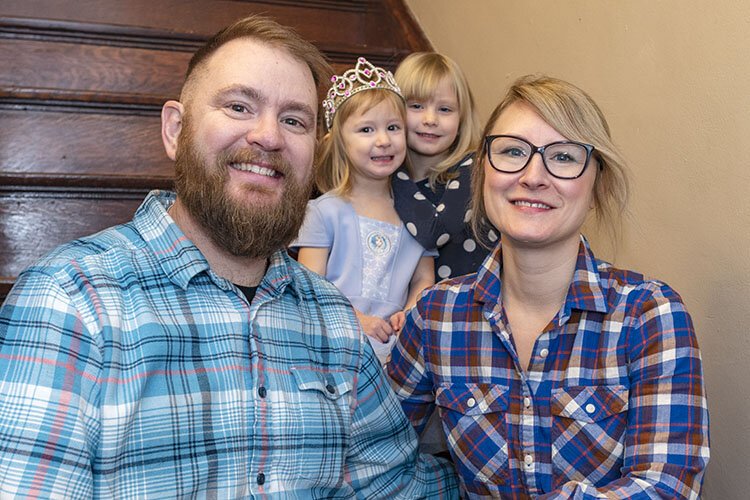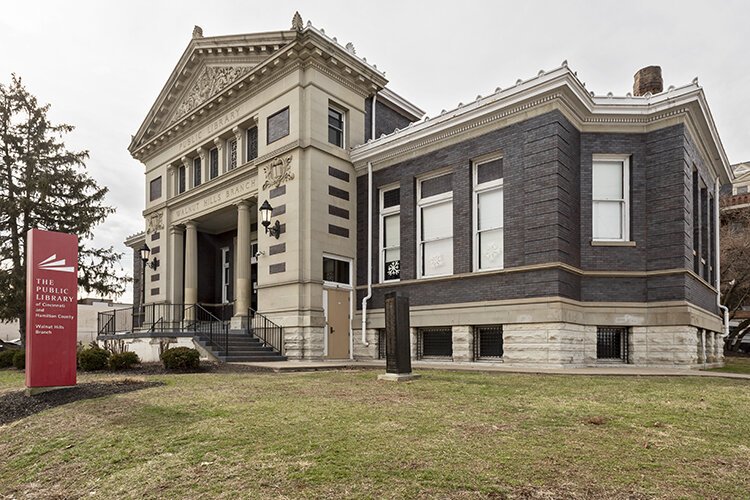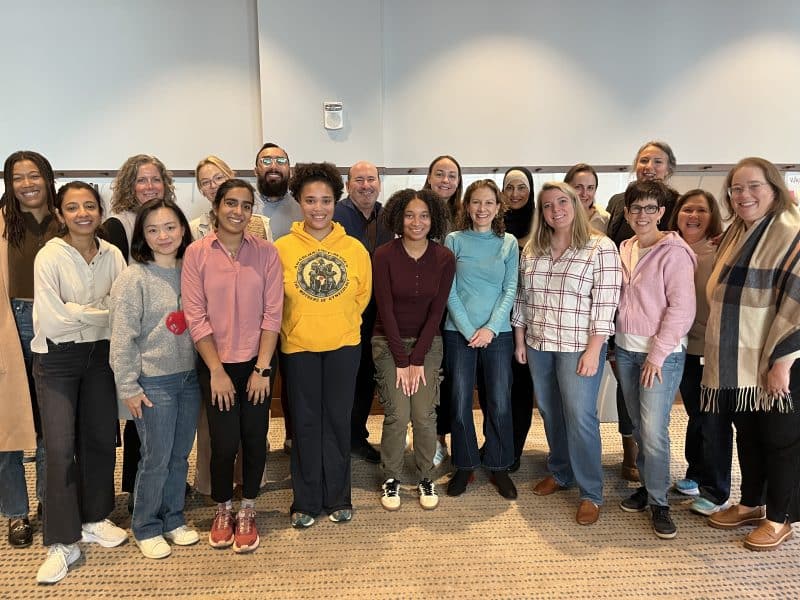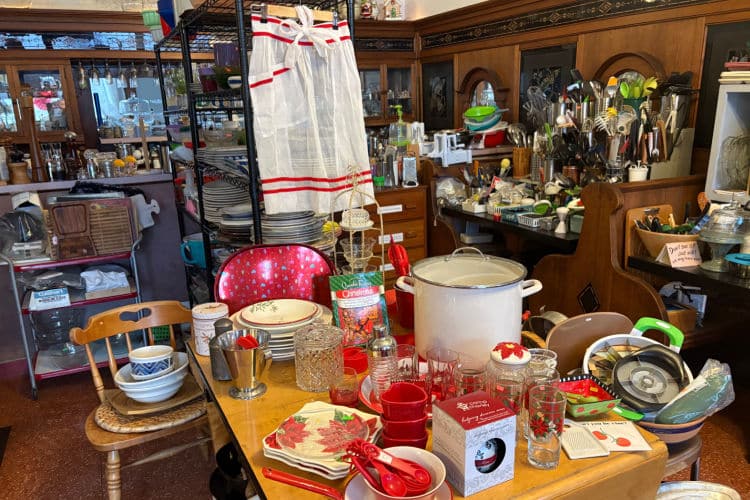On-the-Ground Walnut Hills: Educating the whole community
In response to their failing school, local organizations and residents work together to improve the lives of students.

When it comes to raising a family, education is a community matter.
Lifelong Walnut Hills resident (and mom) Sowonie Kollie agrees.
Her family has a long history with Frederick Douglass Elementary School. Her mother worked there when Sowonie was a child, her sister attended the school, and she even worked there for a time. Her daughter Kamari is now a student in sixth grade and Kollie says the school is truly a part of the neighborhood.
“When the kids go to Douglass, they’re not just going to school, they’re going in to a community,” she says.
Kollie likes how the elementary school and other neighborhood institutions feel very cooperative, sharing events and educational opportunities for the kids. She mentions the library and the Bush Recreation Center as two places where neighborhood kids flow in and out throughout the week, making themselves at home after school hours.
Kollie will be honest, though, that Frederick Douglass School didn’t always feel like the right choice for her family. There were a few years when she pulled her daughter out and enrolled her in a different school. She says she didn’t feel like the teachers were a great fit for her daughter.
But later, when her daughter entered fifth grade, they decided to try it again. And she says it’s been an excellent experience. What she appreciates most is the muti-faceted support her daughter is given to help her succeed.
“From what I see,” Kollie says, “there are a lot of opportunities for the kids to get mentorship. There are so many ways to advance, not just in the classroom.”
She mentions an after-school program her daughter is involved in, where she receives academic mentoring and tutoring, plus has the opportunity to shadow older students at their high schools. Since her daughter will have to transition out of elementary school next year, she’s glad these opportunities exist.
Kollie wants what all parents want for their kids — “I want her to go as far as possible, as far as she can go with her education.”
Kamari has big plans. She wants to be a scientist — a chemist, specifically. She wants to work for NASA.
Taking a chance; leaning in
Frederick Douglass Elementary School has been a neighborhood beacon since the mid-19th century when it was started as a school for the neighborhood’s growing black population. The school grew and adapted with the neighborhood and then was annexed into the Cincinnati Public School (CPS) district in 1954. At that point, the school became officially “racially integrated,” but has always remained overwhelmingly African American.
Frederick Douglass enrolls about 300 students, preschool through sixth grade. It is the Walnut Hills neighborhood school, meaning that parents who don’t participate in Cincinnati Public School’s lottery system for enrollment in a CPS magnet school will default to Frederick Douglass.
Right now, the school is more than 95% black, with only a handful of white students, and the large majority of the students are low-income. At its most superficial level, the school is poor, black, and vulnerable. Walnut Hills as a neighborhood is, broadly, far more diverse with nearer to a 70:30 split of black to white residents and far more economic diversity within the community. So Frederick Douglass is strikingly homogeneous for such a diverse neighborhood
According to the Ohio state School Report Card, Frederick Douglass is a D-rated school. This presents a difficult situation for Walnut Hills parents like Kollie and others. Though the school administration is working hard to improve the school and shake the negative perceptions, it will be a long road to vitality. If presented the option, would parents rather choose another school or will they embrace their (near-failing) neighborhood school?
There are certainly other elementary school options for families in the area.
In 2017, CPS opened the new Spencer Center for Gifted and Exceptional Students in Walnut Hills. As a part of the CPS magnet system, city-wide students in grades 3–10 can apply for the school if they meet the testing requirements. There are also at least three private elementary schools — The Seven Hills School, Mercy Montessori, and St. Francis De Sales — within only a few blocks in neighboring East Walnut Hills. Parents could homeschool. Students could commute to a different private school. And they are also welcome to enter the CPS lottery system for a public magnet school in a different neighborhood.
So, what do most Walnut Hills parents do? Of those who are able, many have chosen to educate their children elsewhere.
When resident Wes Crout and his wife, Lisa, moved to the neighborhood almost ten years ago, they weren’t thinking about elementary schools. They were newly engaged to be married. They had no children. They didn’t know if they’d be around long enough for schooling to be an issue.
Joining the neighborhood school PTO was not yet a part of Crout’s long-term plan. But, when his daughter enrolled in kindergarten at Frederick Douglass last year and he found out that they had no parent association, the plan changed. He is now the PTO president.
Sending their daughter to Frederick Douglass was, admittedly, not an easy choice. But after doing plenty of research and getting to know school Principal Jeff Hall, they felt comfortable enough to give it a shot, even if it wasn’t forever.
“Nothing is a terminal decision,” Crout says. “We decided we’d do this, we’ll lean in, and if it goes poorly, we’ll reevaluate.”
So far, all is well. The Crouts’ daughter, Ruby, is now in first grade. (They have a 4-yr-old daughter, as well, who attends a nearby preschool.) Wes, who works from home as an IT professional, has the flexibility to bring Ruby to school by bike in the morning and help out often during the day by organizing parent meetings, helping plan special events, and tutoring students.
“I’m here so much,” he says, “the kids think I work here.”
Frederick Douglass has many community partners helping to support the school, including Miami University’s department of teacher education, Walnut Hills High School, and the Walnut Hills Faith Alliance which is currently engaged in a fundraising campaign to fill the school library with new books.
But much of the academic success of any student or school still depends on parent involvement and investment. And, for many years, Frederick Douglass has struggled to engage enough parents to push the school further toward sustainable success.
Now in its second year of existence, the Frederick Douglass PTO only averages about eight parents in attendance, but it’s had as many as 15. Small numbers aside, Crout says it’s been a great year and there is increased interest from parents.
Sowonie Kollie understands the situation well. She’s committed to her daughter’s success, but as a single mom working to support her two kids, she doesn’t have the free time or work flexibility that some other parents — like Crout — might have.
“I’ll give my input,” she says, “but I can’t go to a meeting.”
She speaks for a lot of parents in the neighborhood. In response, Crout and the school administration are working to accommodate parents who cannot be present but still care about their children’s education. They’ve moved meeting times around and are looking for different ways to engage parents.
But there are other barriers at play, as well. Crout says that a lot of his neighbors hold generally negative perceptions of education and some of them have bad memories of Frederick Douglass, specifically. But the school gets better all the time, he says, and the kids need their help.
“How do we get them to feel welcome and come in and advocate for their own kids?” he asks. “I can advocate for my own kids and a few other kids but I can’t advocate for 300 kids.”
As for the future, Crout would love to help attract new students to the school. His family has had a great experience so far and they’d like to welcome other Walnut Hills families — especially those who might have the option to go elsewhere — to “lean in” and give it a try.
“I don’t want to be the face of Douglass School because I’m not the face of Douglass School,” Crout explains. “My hope for Douglass is not that it becomes a ‘white school’ but that it truly represents Walnut Hills.”
Books, computers, and community connection

The public library is one of the only truly free and accessible community resources in any city, a place where the entire neighborhood can receive education throughout every season of life. The Walnut Hills library is no different.
Margaret Breidenbaugh is a senior library services assistant at the Walnut Hills branch of the public library. A Chillicothe native, she and her husband moved to Walnut Hills from Oakley five years ago.
She lives within blocks of the library and relishes being in such a diverse community with so many stories to tell.
Breidenbaugh originally moved to Cincinnati for a job teaching voice lessons. Then, a personal interest in her own German family history and archival studies led her to graduate school where her capstone project was an oral history project in Walnut Hills. She spent a lot of time talking to developers, to nonprofit workers, and public servants to get a “holistic snapshot” of what the neighborhood was really like at the time. The project wrapped up in 2018, about the same time she began working at the library.
Breidenbaugh didn’t want to be a librarian, but she had a strong interest in social justice, particularly in her own neighborhood. Her job at the library involves a lot of the day-to-day management of the facility but allows her time on the floor to get to know patrons. She sees the library — and her job — as a public service.
“I think that perspective puts me in a good position to assist people who are struggling,” she says.
And Breidenbaugh says many of her patrons are, in fact, struggling with things like job and housing insecurity. She says the library staff spends a lot of time assisting people on computers.
“With adults,” she explains, “it’s really about computer literacy and finding time to do really important things like looking at their medicare statements or printing off paystubs to send to Job and Family Services.”
The librarians provide curated book collections for local teachers and during after school hours the library fills with youth who come for free snacks, to rent DVDs, play games on the computers, and check out new books. Breidenbaugh says there is also a group of high school boys who have begun helping out after school because, she guesses, “suddenly it’s become cool to volunteer at the library.”
Breidenbaugh wants to use her position to help promote neighborhood services and opportunities for those who need them. After all, the library is one of many community assets.
Last year, she began self-publishing a community newsletter called Walnut Hills Weekly that lists free- and reduced- cost events around the neighborhood. The newsletter can be found posted in various locations around town — schools, churches, restaurants, etc. — and is one more way to integrate Walnut Hills residents into the various social and educational opportunities available.
Raising up the whole village
There is one new addition to the neighborhood that has the potential to impact two generations at once in Walnut Hills. The Cincinnati Scholar House will open in April 2020.
The Scholar House is a housing facility designed for single mothers who are enrolled in school. But, unlike a standard apartment building, the Scholar House provides residents with multiple levels of support and mentorship as they work toward finishing their education and caring for their children. There is an on-site preschool, apartments are low-income subsidized, and residents receive life-skills training and mentorship during the duration of their stay.
Property developer Model Group has managed the design and construction of the facility. Model Group Developer Tim Westrich says this project is a great addition to Walnut Hills because it is a holistic response to two needs in the community — affordable housing and quality education.
Affordable housing has been an urgent need in Walnut Hills since the 1960s. And while groups like the Walnut Hills Redevelopment Foundation and the area council continue to work hard to preserve and protect the housing that does exist, many residents still feel vulnerable to displacement.
Westrich says that a lot of low-income residents are forced into “the worst kind of affordable housing — housing of last resort.” But the Scholar House model of housing is the “best possible option,” with programs and services that prepare single mothers for their next step — budding career prospects, greater financial security, and the kind of stability that subsidized housing cannot provide. The goal is, basically, to get them graduated and out on their own.
One thing that makes the Scholar House different from some other similar housing facilities is its location. Rather than being tucked away from the rest of the community, the Cincinnati Scholar House is being built right in the middle of it.
“It’s amazing that the site is right at the epicenter of where Walnut Hills is experiencing this new rebirth,” Westrich says.
Residents will feel more integrated into the Walnut Hills community and it will be easier for them and their children to engage with their neighbors and enjoy the great things happening outside their front doors.
He continues, “When you walk by, you won’t even know it’s low-income housing. [The facility] is contributing to the environment, not detracting from it.”
The building has been designed to blend seamlessly with other new mixed-use developments nearby. The street-level commercial space will include the childcare facility used by residents and open to the public, plus 3200 square feet of retail space. On the upper levels are shared community spaces, a study and computer lab, an exercise room, and 44 private, fully-equipped apartments. In the rear of the building, residents will have a shared outdoor space including a play area for their children.
Beth Schwartz of Cincinnati Union Bethel (CUB) — one of the managing agencies of the Cincinnati Scholar House — says that “a component of the program is clearly about building community.”
The Cincinnati Scholar House will join two of Cincinnati Union Bethel’s other programs — the Anna Louise Inn and Off The Streets — in serving and empowering vulnerable women across the city. But they’re not managing the project alone. The downtown church Christ Church Cathedral is a partner in the program and Preservation of Affordable Housing will be the building’s landlords. Schwartz says CUB will serve as the “resident services” provider.
The Scholar House has educational partners as well. Schools like Chatfield College, the University of Cincinnati, and Cincinnati State Technical and Community College have already helped recruit qualified applicants from among their current students.
Schwartz says she’s been working in social services for a long time and has been involved in a lot of great initiatives, but the Scholar House is something different, something really exciting. She says so much of the work of social service agencies is “just keeping people above the water line.” But the trajectory of the Scholar House model is completely different.
She explains, “Poverty is transmitted from generation to generation. Education is a disruptor of that cycle. And to be doing it two generations at a time is a beautiful way to help people move on that continuum.”
Westrich says construction is nearly complete, with about six weeks left until the facility can be open for business. Then Walnut Hills will welcome its newest neighbors.
The On The Ground Walnut Hills feature series is made possible by a grant from The Carol Ann and Ralph V. Haile, Jr. / U. S. Bank Foundation.













